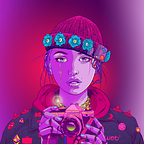What is Web 3.0?
A paradigm shift in the way users interact on the internet
Web 3.0, or the decentralized web, is a fundamental shift in the way users will interact with and on the internet.
Where Web 1.0 allowed users to query and read information, and Web 2.0 allowed them to create and contribute to information creation (think social media, etc.), Web 3.0 builds on this by allowing users to take ownership of their information in an economy that is user owned. No longer a need to trust large corporations with your data. What you create and own is what you have control over. No one else. Just sovereignty.
Why is Web 3.0 Important?
Web 3.0 uses blockchain technology as an open, immutable (trustless), permissionless and ubiquitous system to record and query data, making interactions with it transparent and verifiable. This allows users to control data and use it how they want and verify the legitimacy of what they see and read. Fundamentally, it takes power away from centralized entities and moves that power, ownership and responsibility back to users, making it more censorship resistant.
Further, users can interact on Web 3.0 regardless of their social status, age, gender, faith, sexual preference, country of residence and any other characteristics used to discriminate, thereby allowing greater participation and inclusion as a global citizen in the world we live in. Imagine having a single account across the entire internet where you could use it for buying and selling products or services, writing and receiving e-mails, publishing, social media and almost everything you currently use the internet for; the key difference on Web 3.0 being that users control how their data is shared and used.
With the adoption of Web 3.0, developers are incentivized to create the most robust and highest quality applications so that users interact with them. In turn, this leads to competition that further progresses innovation and value to Web 3.0 users.
In essence, Web 3.0 creates an open and transparent ecosystem allowing users to do what they want with the data and information they own, and distributes wealth to those that create value.
How is it currently being used?
Web 3.0 is currently manifesting itself in a variety of applications in both the financial and social spheres. While there are many more, some examples include:
- Open financial markets where rules are created by developers deploying smart contracts (that are coded to perform mathematical functions to reach an outcome) rather than bank tellers/ managers who have discretion.
- Artists being able to realize the value of their artworks through the creation and sale of non-fungible tokens (NFTs), where a portion of secondary sales also reaches the creator.
- Play-to-Earn (P2E) gaming turning what was once a dream into reality, with completely new economies created as users interact with the game. Participation and interaction with these platforms reward users with tokens, effectively sharing an ownership stake with those who create and build within the game ecosystem.
- The advent of Decentralized Autonomous Organizations (DAOs — which can be thought of as Web 3.0 companies) that allow users to contribute labor or equity to produce new products or solve real-world problems and allow contributors to be rewarded for their effort.
- To build identity and reputation — where interactions with applications built on the blockchain can be verified and recorded permanently. For example, a user may wish to donate funds to a particular project. When this occurs, it is recorded on the blockchain, as an immutable transaction that can be viewed by all without trust assumptions.
While the list above is not exhaustive, it is evident that interaction with Web 3.0 applications can be more rewarding than current Web 2.0 alternatives.
Final Thoughts
Web 3.0 is a dynamic and evolving space and likely the future of the internet. Many Web 2.0 companies (Facebook, Twitter) are actively looking at ways to enter the space and capitalize on their current large market shares and user databases to do so, underscoring the tremendous value they see in the space. In the end, Web 3.0 represents a freer internet experience, full of opportunity to individuals who choose to partake. Ultimately, what Web 3.0 looks like will be defined by its users.
Do you agree / disagree with the above? Do you have comments? What else about Web 3.0 is important/ have I missed? I would love to hear from you. I can be reached on Twitter @cryptobear55 or via comment below. Thank you.
